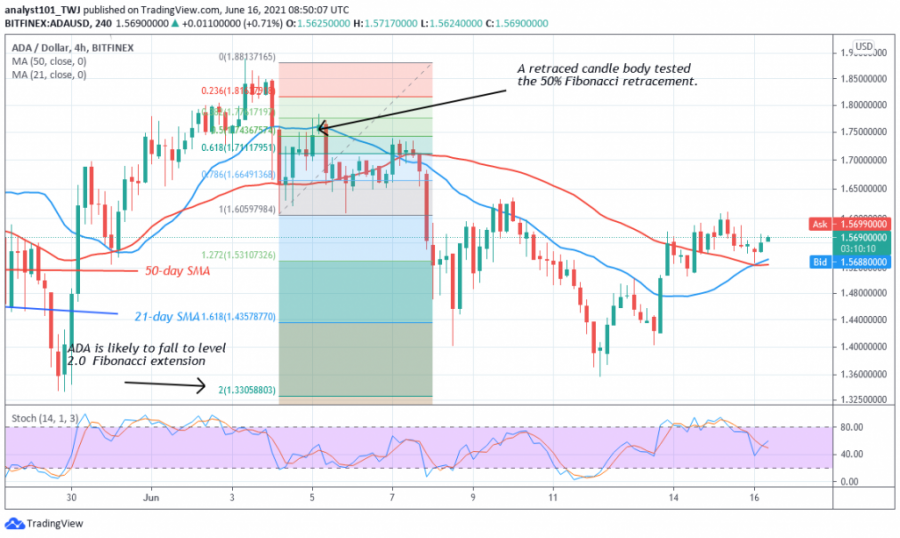Cardano in Range-Bound Move, Unable to Push above $1.80 Overhead Resistance

Cardano's (ADA) price rebounds above $1.40 support as prices rallied to $1.60 high. The uptrend is confirmed as ADA retested the $1.40 support before the upward move. The bullish momentum broke above the moving averages as the price reached the previous highs.
ADA will continue to rise as long as the price bars are above the moving averages. Presently, the market is retracing and has tested the 21-day SMA. On the upside, if the price breaks above $1.60, the market will rise to retest $1.80 overhead resistance. Unfortunately, buyers are yet to breach the $1.80 resistance since May 19. For the past month, ADA has been in a range-bound move between $1.35 and $1.80. ADA is trading at $1.56 at the time of writing.
Cardano indicator analysis
The crypto’s price has broken above the resistance line of the descending channel. If the price breaks and closes above the resistance line, ADA will continue its upward move. Cardano is at level 48 of the Relative Strength Index period 14. It indicates that the market is in the downtrend zone and below the centerline 50. ADA is in a bullish momentum as the price is above the 60% range of the daily stochastic. The crypto will rise as the price remains above the moving averages.
Technical indicators:
Major Resistance Levels – $2.00 and $2.20
Major Support Levels – $1.60 and $1.40
What is the next move for Cardano?
Cardano is in an uptrend as price breaks above the moving averages. Meanwhile, on June 4 downtrend; a retraced candle body tested the 50% Fibonacci retracement level. The retracement indicates that ADA will fall to level 2.0 Fibonacci extension or level $1.33. ADA has retested the 2.0 Fibonacci extension and resumed its upward move.
Disclaimer. This analysis and forecast are the personal opinions of the author and are not a recommendation to buy or sell cryptocurrency and should not be viewed as an endorsement by CoinIdol. Readers should do their own research before investing funds.
Source: Read Full Article


